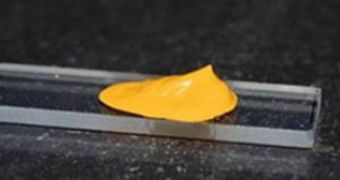Even though the uncertainties dominating the solar market keep putting investors on the run, scientists are still aiming to innovate this line of business. One of the most recent discoveries is a new kind of cost-effective solar paints, meant to replace the common photovoltaic solar panels.
Experts from University of Notre Dame think that financial savings triggered by their new invention are tempting enough to make the new product popular in no time. Not to mention it is really easy to implement and use, Science Daily informs.
Clients would only have to apply the coat of paint on the outside of their homes and witness how it captures sunlight and converts it into clean green energy that could power all the gadgets inside the house.
Scientists say the innovative "solar paint" relies on semiconducting nanoparticles to provide energy. The main goal is to find more suitable alternatives to the already known silicon-based solar cells.
"By incorporating power-producing nanoparticles, called quantum dots, into a spreadable compound, we've made a one-coat solar paint that can be applied to any conductive surface without special equipment," explain the researchers involved in this project.
The experts have decided to publish their findings in the journal ACS Nano. Apparently, nano-sized particles of titanium dioxide are coated with cadmium sulfide or cadmium selenide.
The elements are then put in a mixture of water and alcohol to obtain a paste. Next step is to expose the product to sunlight and see how it captures it and transforms it into green energy.
Experts are proud of their progress and state that costs are currently not an issue. The only problem experienced is the low efficiency rate, up to 1% inferior to the one displayed by traditional silicon-based cells, reaching up to 15%.
Nevertheless, scientists are eager to continue their research and find and exploit methods of increasing the conversion efficiency rate and the stability of their newly-discovered material.

 14 DAY TRIAL //
14 DAY TRIAL //